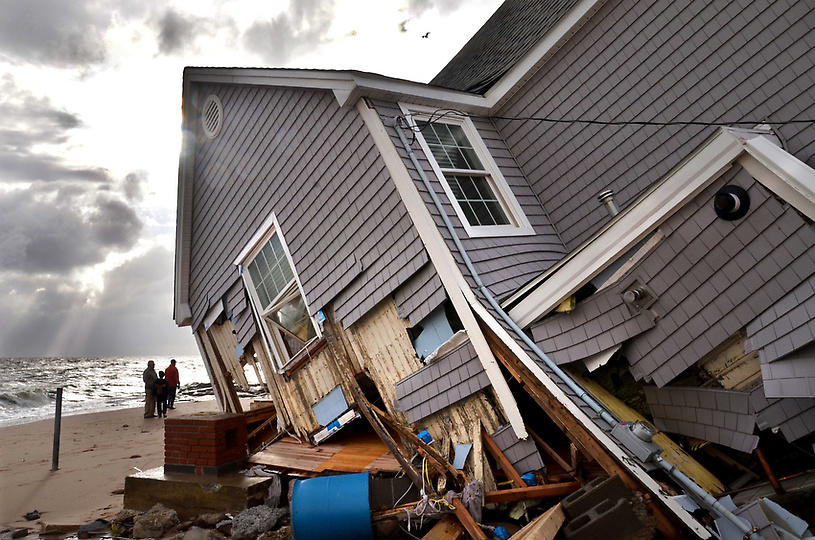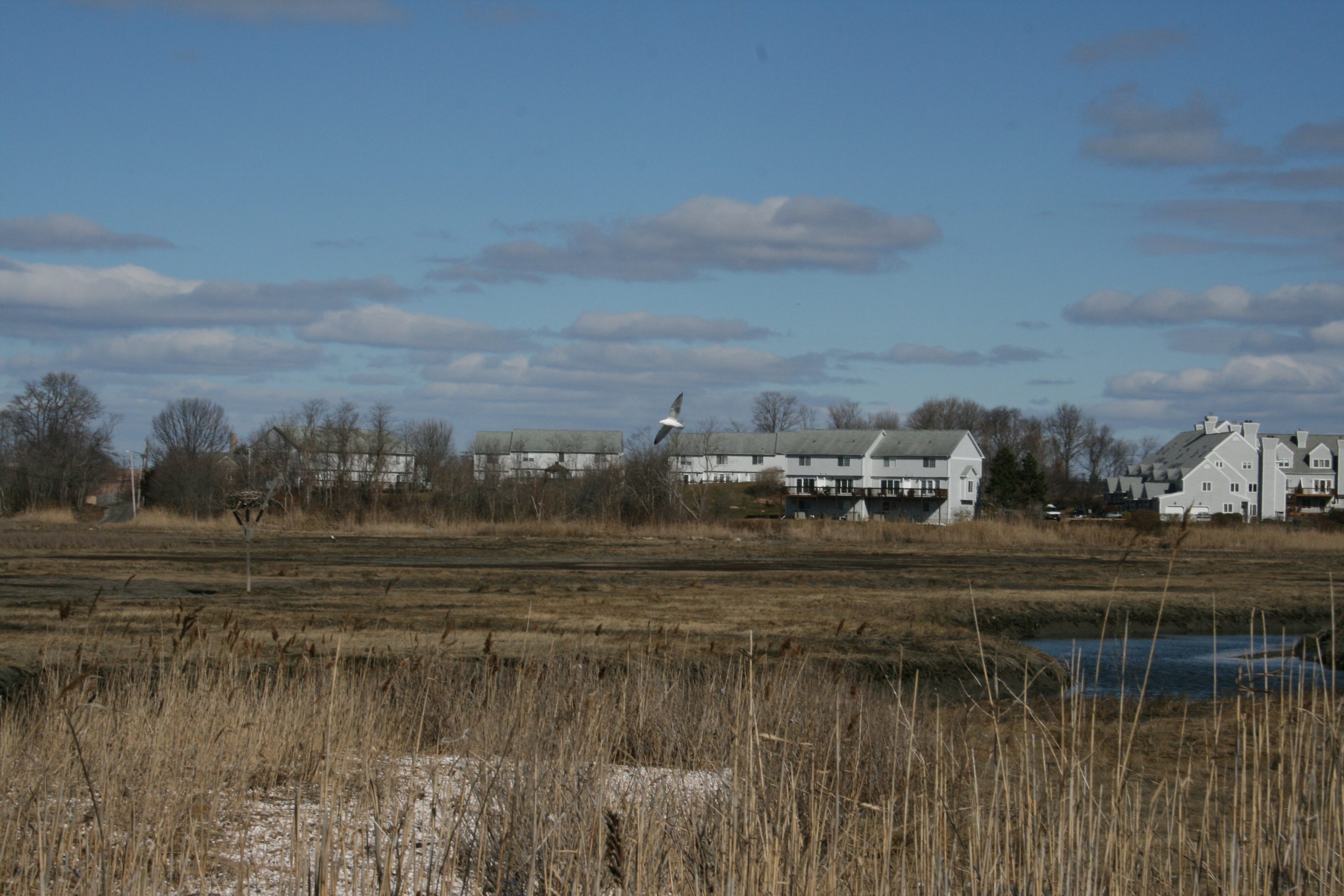In the second of this two-part post, Adam discusses using natural infrastructure and planning for Connecticut’s future.
Adam Whelchel is Director of Science of The Nature Conservancy in Connecticut. Speaking with him is Kevin Kromash, blogger for CFE/Save the Sound.
Kevin: How will built infrastructure and natural infrastructure need to be used together in Connecticut to reduce the impacts of climate change?
Adam: We’re in a good spot right now in Connecticut. We have enabling legislation that defines sea level rise. That is no small feat, and lawmakers have also passed legislation enabling the use of natural infrastructure or non-structural approaches for erosion and flood control. So, the ability to use natural infrastructure like living shorelines and salt marshes are built into our state statute. Until recently the typical default was sea walls, bulkheads, and things of that nature. Engineers have confidence in those structural engineering fixes. We don’t have enough examples in Connecticut of the use of natural infrastructure as an alternative in locations where it is feasible. So we sit down with the coastal engineers, and ask them, “what prevents you from recommending these alternative solutions to your clients?” Ideally we’re thinking about it in terms of a hybrid of engineered (gray) and natural infrastructure (green) design. There are a number of examples in other locations, in the Chesapeake Bay and the Hudson River through the Sustainable Shorelines program.

Kevin: Have you seen any interest from municipalities in this type of planning?
Adam: Connecticut is unique, because we did away with our county governance structure, so the front line of dealing with extreme weather and climate change today and in the future is at the municipal scale, with support from the regional planning organizations and, to some degree, various state agencies. The Nature Conservancy produced the Coastal Resilience tool, which is great for municipalities to visual their immediate and future risks from economic, social, and ecological perspectives. We have coupled this critical decision-support tool with a Hazards and Community Resilience workshop process in 20 coastal municipalities to date, in accordance with the Regional Planning Organizations efforts. The information and process helps municipalities get on the right path to resilience early by identifying priority actions to reduce risk and keep their communities safe and prosperous.
The importance of natural resources – marsh systems, beach dunes – in coastal defense is largely acknowledged, so there’s a lot of concern about maintaining and not losing them. The town of Guilford is probably the furthest ahead at this point, because not only have they internalized the urgency, but they have also been doing something about it. They are bonding for raising roads, they’re engaging the entire community in the discussion, and they are doing what they can to retain and not loss important community assets like town beaches, parks, and salt marshes.
If I had to boil the issue down, it would be: “What can we do today that reduces or avoids future costs?” The more seriously you think through the implications of vulnerability and exposure, and act on those concerns now, the more flexibility you will have in the future. Towns recognize that there will just not be enough federal or state dollars, so they are kind of on their own. The more self-sufficient and direct they are, the more effective they will ultimately be at reducing risk and improving resilience for their residents, businesses, and natural resources.

Kevin: Do you have any thoughts on Connecticut’s path in the longer-term future – the next century, say – with respect to climate change?
Adam: I’m encouraged on a daily basis by the hardworking people in Connecticut’s towns and regional planning organizations: the town planners, the departments of public works, emergency managers, planning and zoning boards, business and community leaders, and residents. They all get it – given the recent events – and they are looking for ways to do things better. A century from now – well, actually sooner than that, in the next 10 or 15 years – I’m hoping that Connecticut will be a national model of how to do things the right way: to reduce risk, and to have an incredibly viable and vital economic backbone interwoven with a resilient social and environmental fabric. I think the opportunity here – if we take it seriously – is nothing but upside for the kind of leadership I see on this issue across Connecticut.
This interview has been edited for length and clarity.
